What is Silver Fishing?
(including video below)
The term Silver Fishing was originally used to describe catching silver-coloured species like roach, skimmer bream, rudd, bleak etc. These days it can mean fishing for most smaller to medium-sized fish – and excluding carp and pike. For example, when people run “Silvers” matches, it is normal to allow perch, F1s (carp/crucian hybrids) and even tench to count as well as the classically “silver” species.
Another way to look at it is as a name for that lovely childhood “mixed bag” fishing where we were happy to catch whatever came along (and hoped not to be smashed by a surprise large carp – or get bitten off by a pike). Lighter tackle, relatively small hooks and small hookbaits are typical for this style.
DON'T MISS THE VIDEO OF SHAUN & IAN'S SILVER'S LEAGUE DAY (INCLUDING 3 TOP TACTICS) BELOW
This article covers both pleasure and match fishing for silvers including:
Why Target Silvers?
You don’t have to be a match angler to love catching silvers. However, if you are going to compete, silver fishing needs to be something you master completely. The great thing is (if competitions leave you totally cold) you can steal the methods developed during competitions (see below) to use when you’re fully immersed in nature on a pleasure fishing day.
For pleasure fishing, you don’t need to master all those different tactics (or invest in all the tackle for each method), you can just pick the one(s) you like best. In fact, taking my kids (age 5 and 8 at the time) fishing on Christmas Eve, 2019 is one of my best memories.
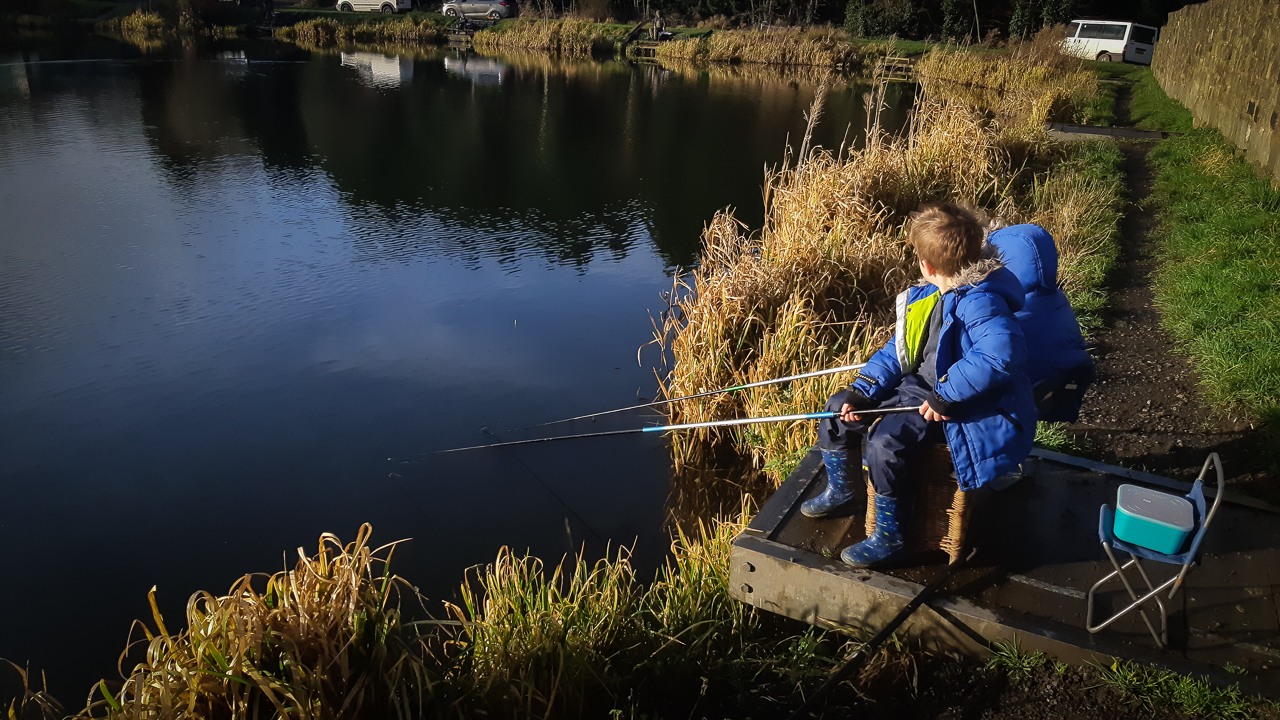
My kids (Theo and Thomas) sitting on the wicker fishing basket belonging to their great grandad, Thomas Gaskell
We took my grandad’s old wicker fishing basket (from the 1930s) to sit on and used £7.50 whips and single maggot. Theo’s first fish was a quality roach – that he promptly named “Barry”. His only previous fish was a trout that I “helped” him hook (OK hooked for him…) on a fly in a local river. So what a great fish to count as your first independently-landed capture. The fish is soft-focus because it was more Theo's face in the picture at the top of the article that I wanted to photograph.
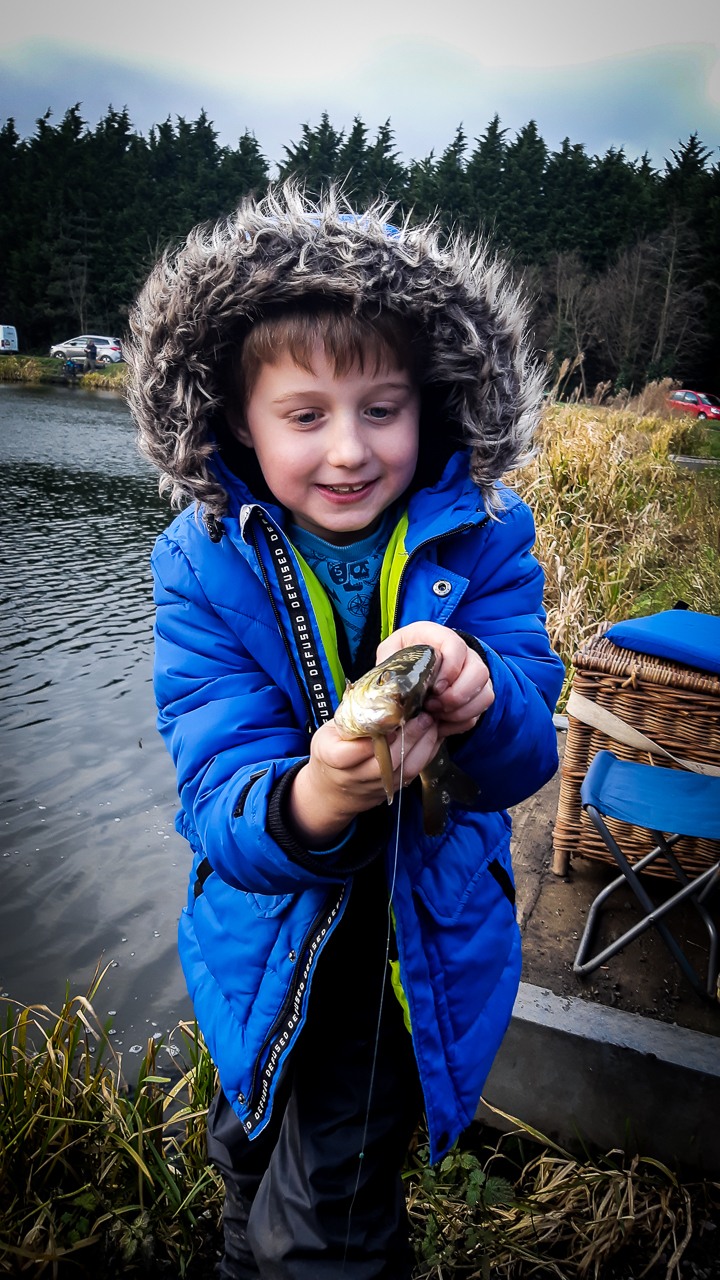
Thomas with a Roach/Rudd hybrid
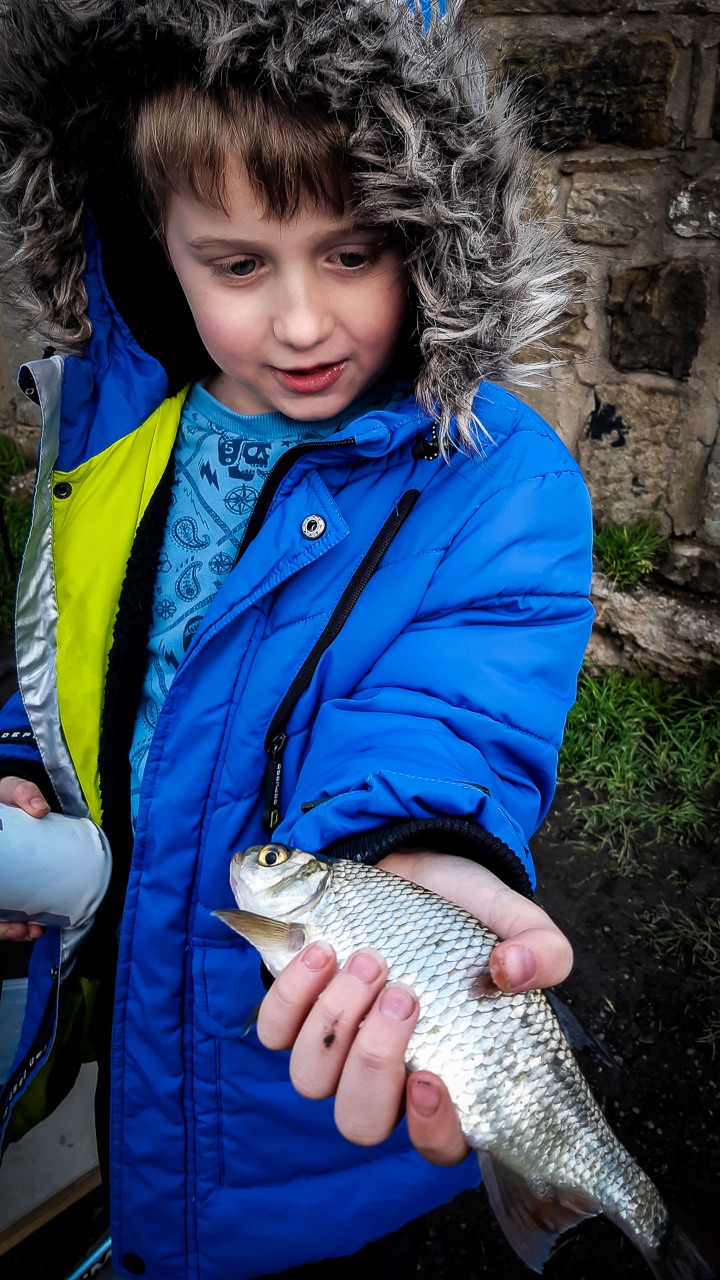
Bit of a Heinz 57 varieties to this roachy/breamy mixture
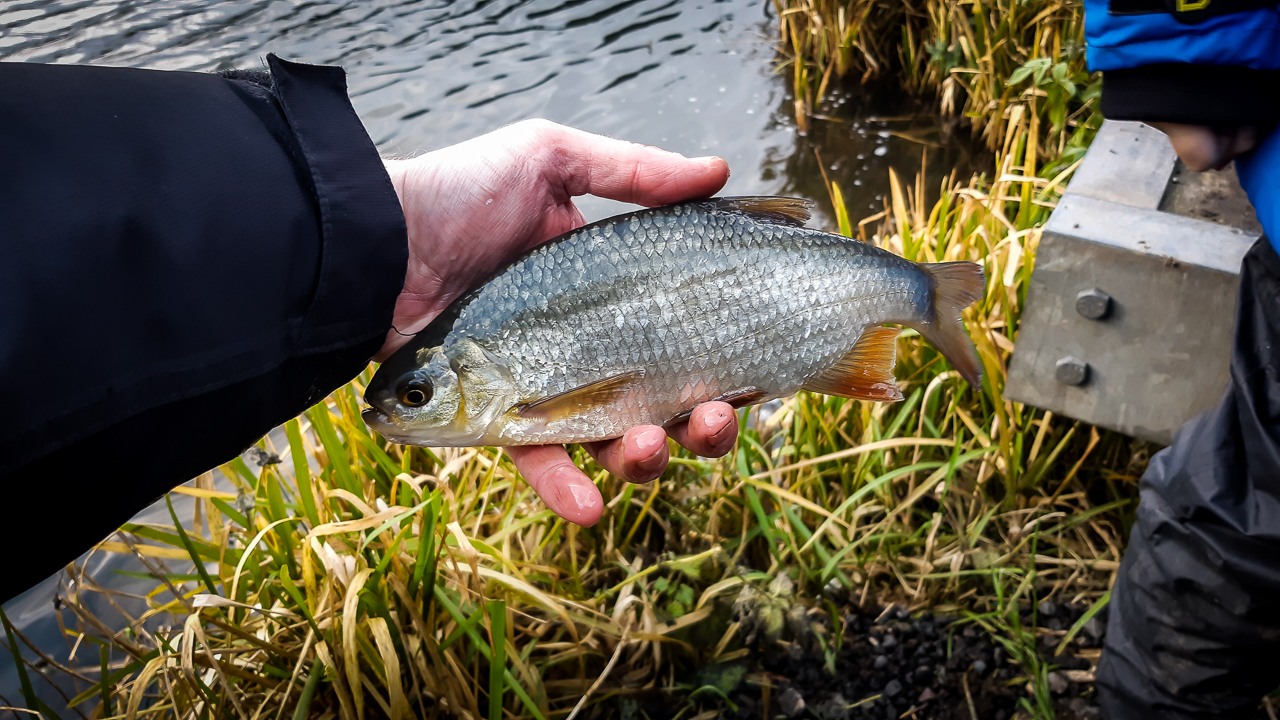
I'm calling definite Roach/Rudd for this hybrid!
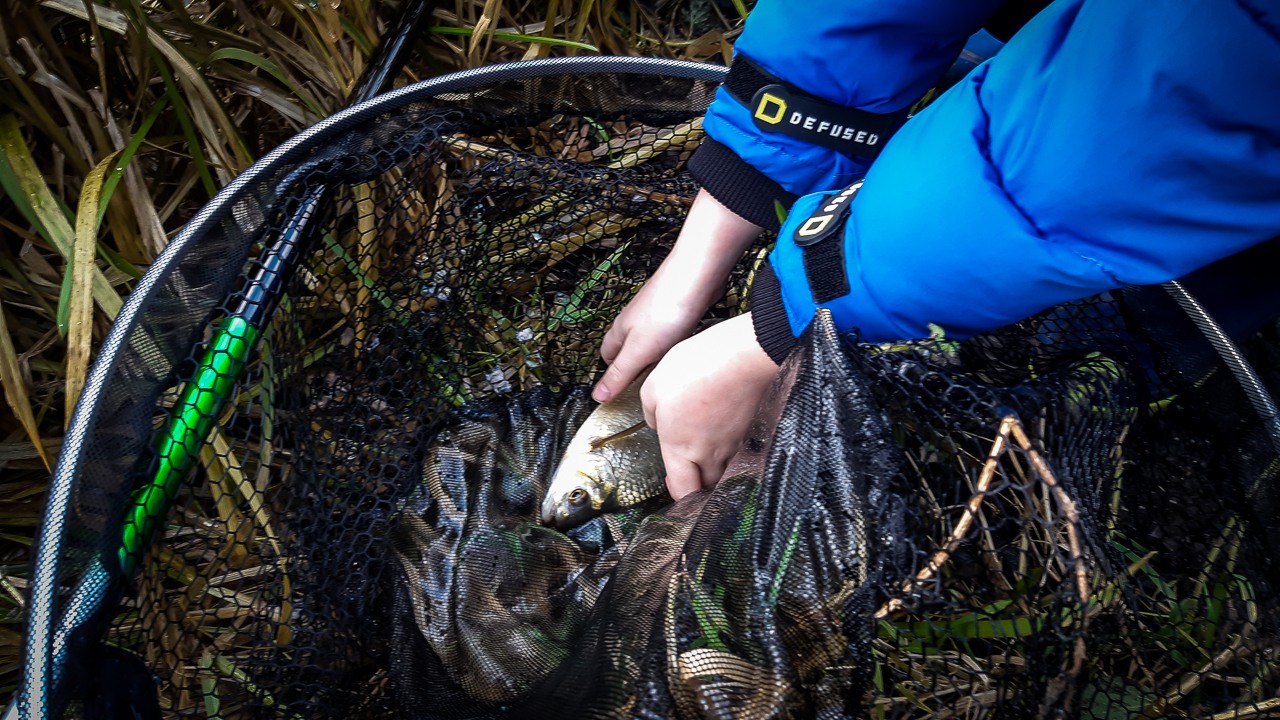
Thomas with a roach/bream cross
Thomas (my eldest son, partly named after my grandfather on my dad's side) also had some nice (and quite interesting) hybrids that obviously had some rudd and bream - as well as roach - in their makeup. Because it was quite cold, it took maybe 45 minutes to gently feed the swim close enough so the kids could reach with their 10ft whips and get a bite. We stayed for probably a total of an hour and a half - which at their age was just about right.
Silver Fishing Matches: You CAN Compete Without Being an A$$hole!
Who knew this was possible? Here's a good chance to introduce my big bro Ian Gaskell and his son Shaun Gaskell. There's a short angler profile for each of them at the bottom of this article.
My nephew Shaun has made it his business to dominate the silver fishing methods for matches. Both Shaun and his dad have a main focus on reservoir/loch-style fly fishing competitions. At the same time, these winter coarse fishing competitions are something they both love.

Shaun Gaskell
Regular Silvers Match Winner
Image © Bandit Angling Tours
In the 2019/2020 winter series Shaun has fished each match most weekends from beginning of November to the end of February.
In every contest apart from 3 he has achieved either a section win or an overall win.
So, it's worth checking out his selection of the three essential methods for silver fishing later in this article.
Here’s a short story of what happened when Shaun let us accompany him on one of his Sunday “Silvers League” matches at Hampton Springs Fishery (INCLUDING SHAUN'S 3 TOP TACTICS in Action):
The sense of camaraderie and the welcoming atmosphere at the fishery was really obvious between everyone in the Silvers League at Hampton Springs.
Even with Storm Dennis kicking up several gears during the middle part of the match, it felt like a much better way to spend Sunday than computer gaming or passively watching a screen.
Well done Shaun on your section win after drawing 10th choice out of 11.
Good techniques and a “zen” mindset are a great recipe for success (who knew??).
Main Species of “Silvers”
Roach
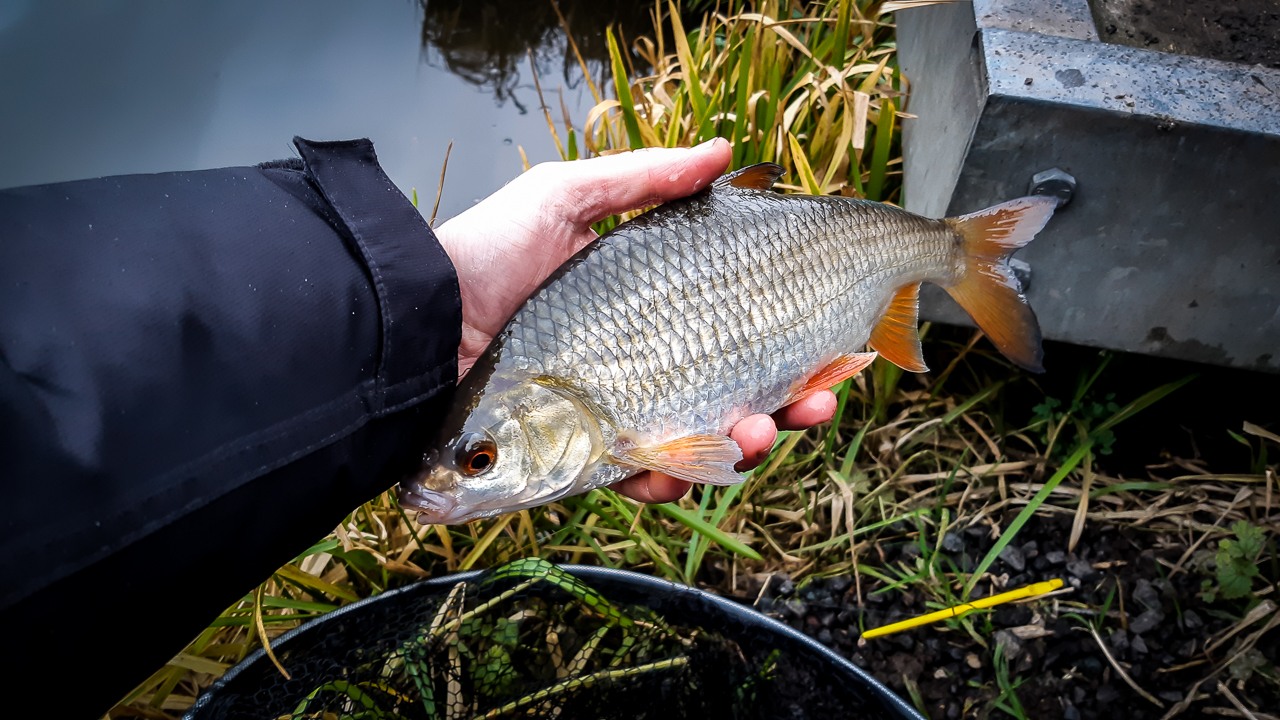
Barry the Roach on his/her way back into the water
Probably the all-time classic Silvers species is the roach. Often one of the first fish you catch as a beginner in the UK, yet it can be really challenging to find and catch the larger specimens of 2lb and above. Here’s the obligatory ego shot of me with my current PB roach at just a whisker under the magic 2lb mark:
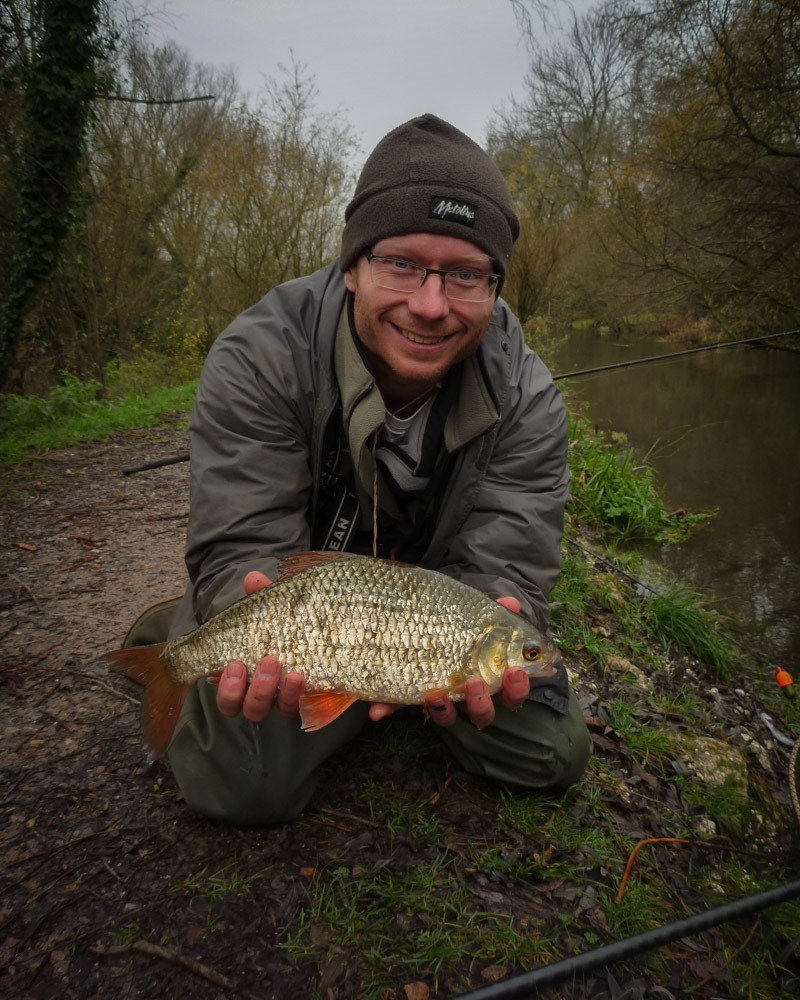
To date my PB roach - caught during a "team-meeting" of the Wild Trout Trust staff. The weighing scales belonging to Tim Jacklin reckoned 1lb 15oz, but I believe he had his hand under the sling...maybe...
It’s probably not the last time you’ll see that photo in one of my articles ha ha ha.
Rudd
The upturned mouth and silver-to-gold colouring along with the vivid fins make rudd one of the most attractive fish around. One of the classic fish of summer too – when feeding higher in the water becomes the norm.
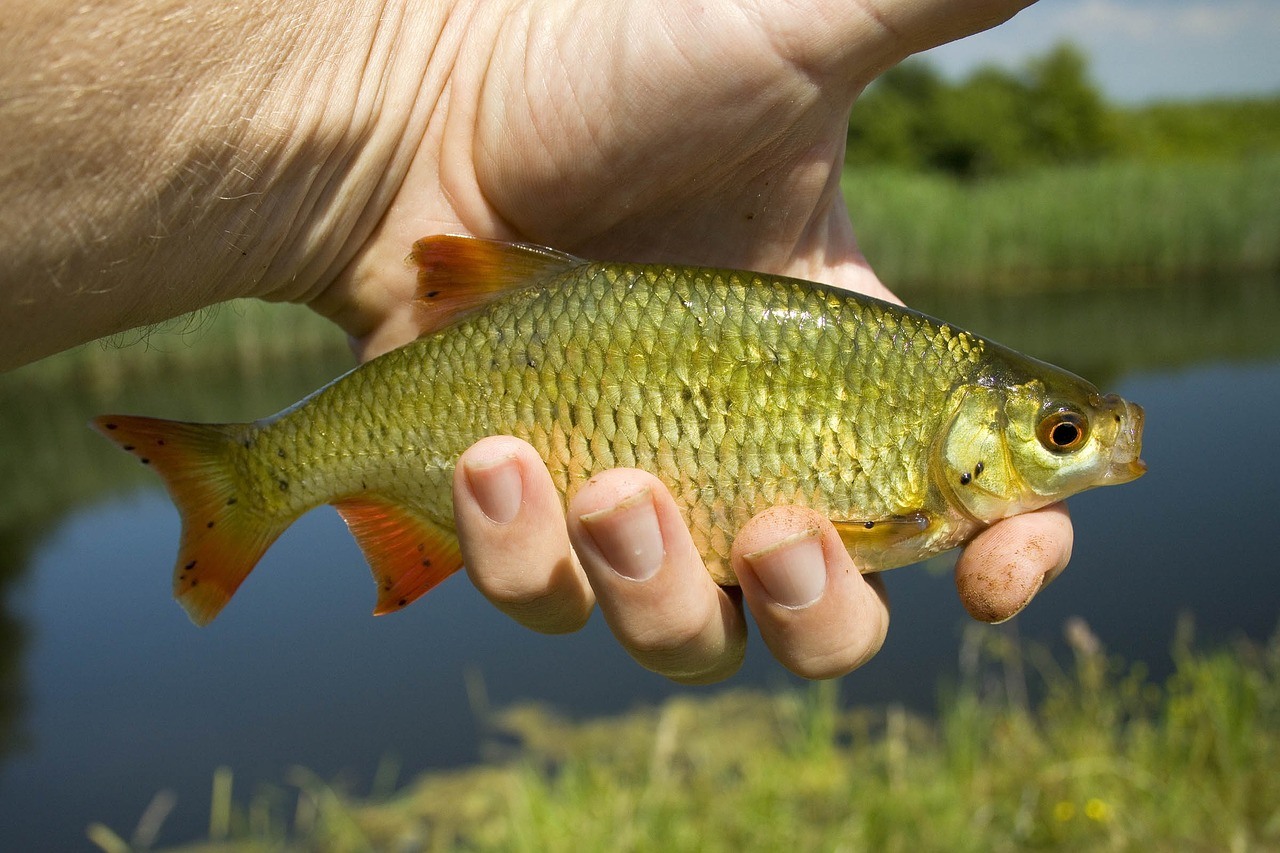
Photo: Andy Ballard on Pixabay
Skimmer Bream
Particularly silver when young, shoals of young bream (skimmers) can create some hectic action when you get amongst them. NOT to be confused with silver bream - which have larger eyes and much less slime than the famously "snotty" normal bream.
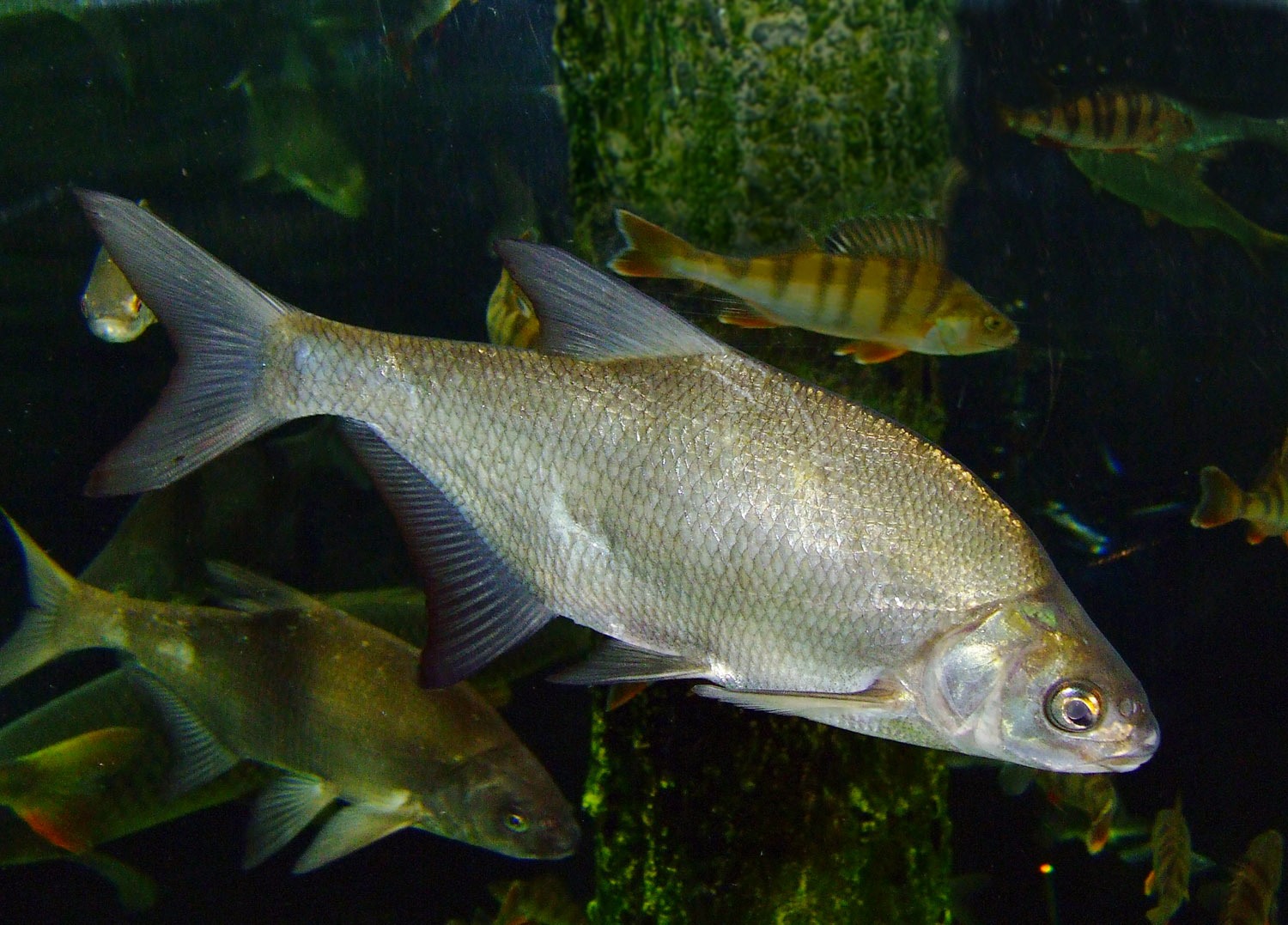
Public Domain Image via Wikipedia
Skimmer Bream vs. True Silver Bream
Without a side-by side comparison it would be really difficult to separate out these two different species. The common bream (Abramis brama) above and the Silver Bream (Blicca bjoerkna) below.

Photo: Jeff Hatt, (CC BY-SA 3.0)
Ide
Also known as orfe, a fish from continental Europe that has been introduced into UK fisheries. These can quickly add up to a significant weight if you are able to stay on a shoal.
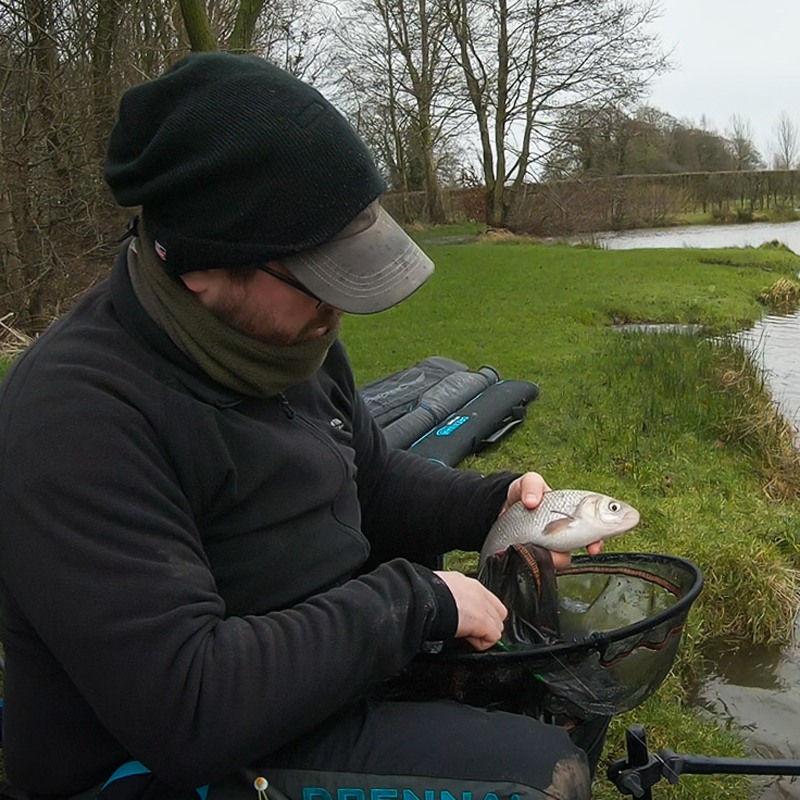
Ide caught by Shaun Gaskell during "Silvers" match
Dace
Making a comeback in some of our river systems – dace are sleek, fast-biting shoal fish of flowing water.
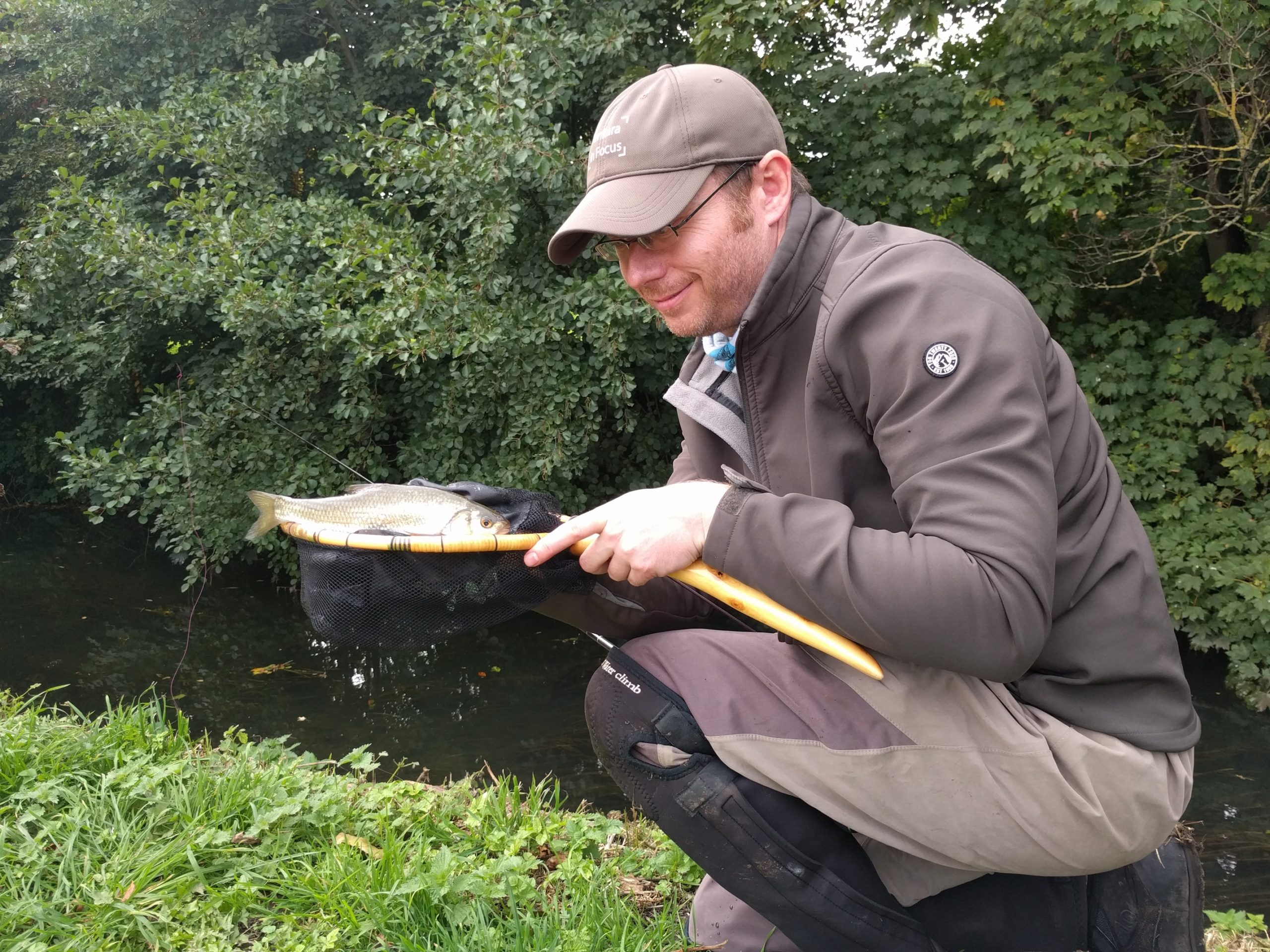
Dace from the River Witham. Photo: Tom Cull
Chub
May be found in stillwaters, canals and rivers. Again, a shoaling fish and plated with silver to gold scales.
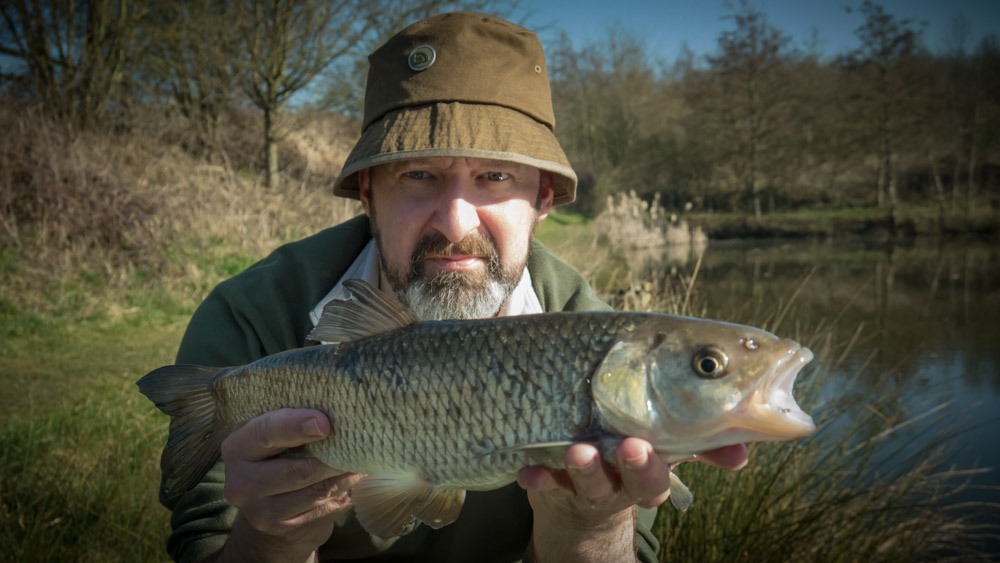
JP with a stillwater chub
Others Species Included for Matches
Whether it is tench, perch, crucian carp or F1 carp - these are often counted within “silver fishing” matches. While not really answering to the description of “silver”, they do fit quite well with that mixed bag non-specialist fishing that a lot of us grew up with. Interestingly, there are often some behaviours and characteristics these different fish tend to share.
Here’s where it is worth me putting my “Fishing Discoveries Fish-Doctor” hat on and exploring why these different species all respond to the core tactics, baits and tackle used in this style of fishing...
Free Rigs Fast-Track E-book
Just before jumping into the fish biology, if you'd like to get my Free guide to building a good foundation with your rigs for a range of situations you can Click Here or on the Book Image/Button below to register for your Free Copy - plus 5 more fishing secrets via email:
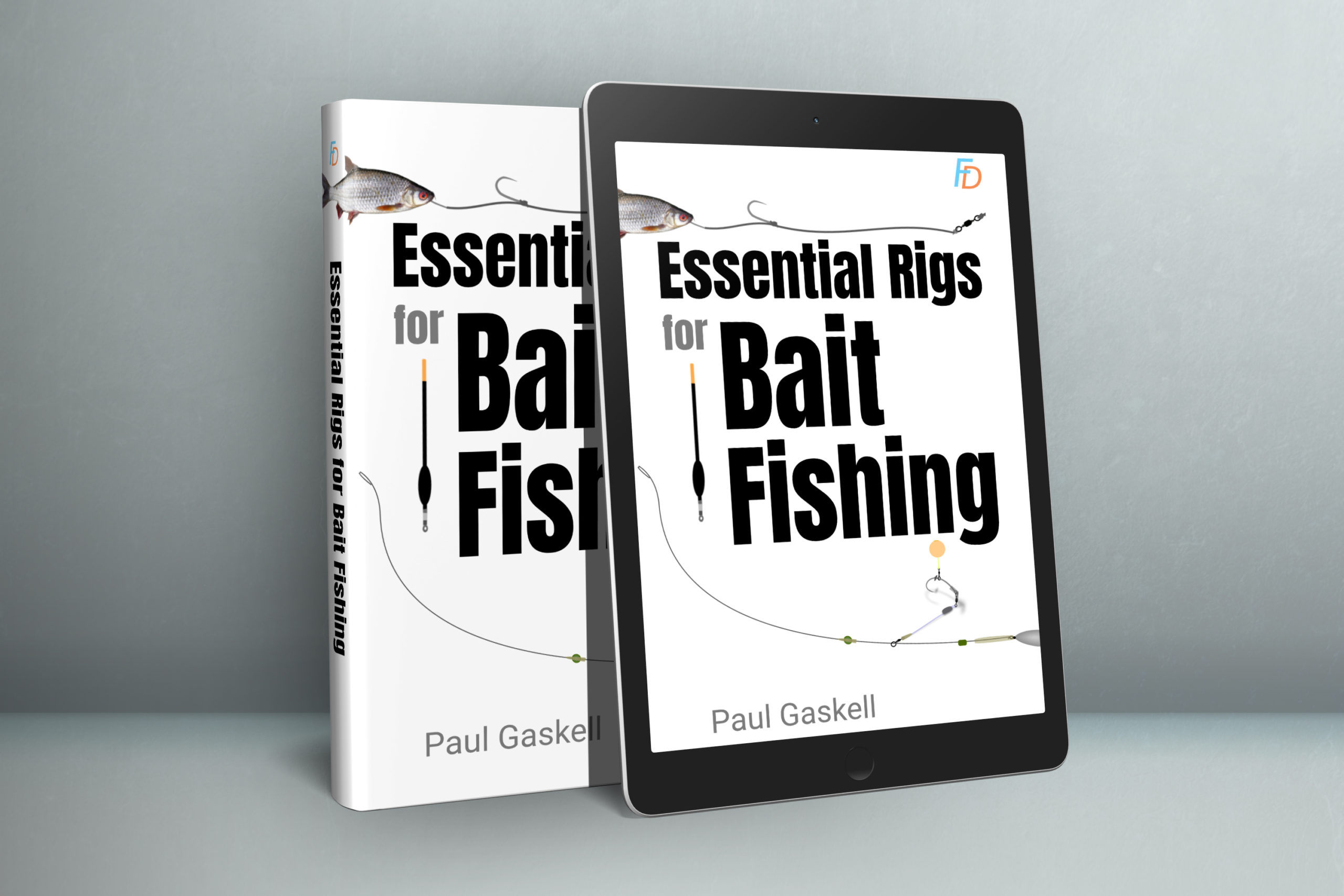
Easy Fish Biology: Secrets of Silvers
One major thing that all the fish featured in this article have in common is that they tend to be shoal fish.
Another is that they all have a very similar goal earlier on in life: They need to get bigger as quickly as possible so that they don’t fit into the mouths of as many other fish!
Especially when they are smaller, the “classic” silver fishing species all look REALLY similar.
There's a reason for that...
By hanging out in large shoals AND being really silvery and reflective, small fish become more difficult for a predator to single out as an individual. If you’re a young fish in one of those shoals, that means you’re less likely to be targeted and eaten.
The reason the different species all look so similar when they are young is that the colours and shapes that didn’t work so well tended to get eaten before they could spawn!
If you want to get a bit deeper into that, check out this next video. You can see really clearly both the "predator confusion" effect of shoaling silver fish - AND, it also talks about how important the communication between shoal members is for avoiding predators (and also finding food it turns out)...
So, if you need to get big to avoid being eaten, it’s a good idea to keep feeding in winter. The problem can be that it’s more difficult to find food in the colder weather – especially when you are just out looking on your own. However, when you’re in a shoal with loads of your mates, there’s a better chance that one of you will find food. Then it’s just a case of moving onto the food that your mate has found (which is where another aspect of shoal communication comes in).
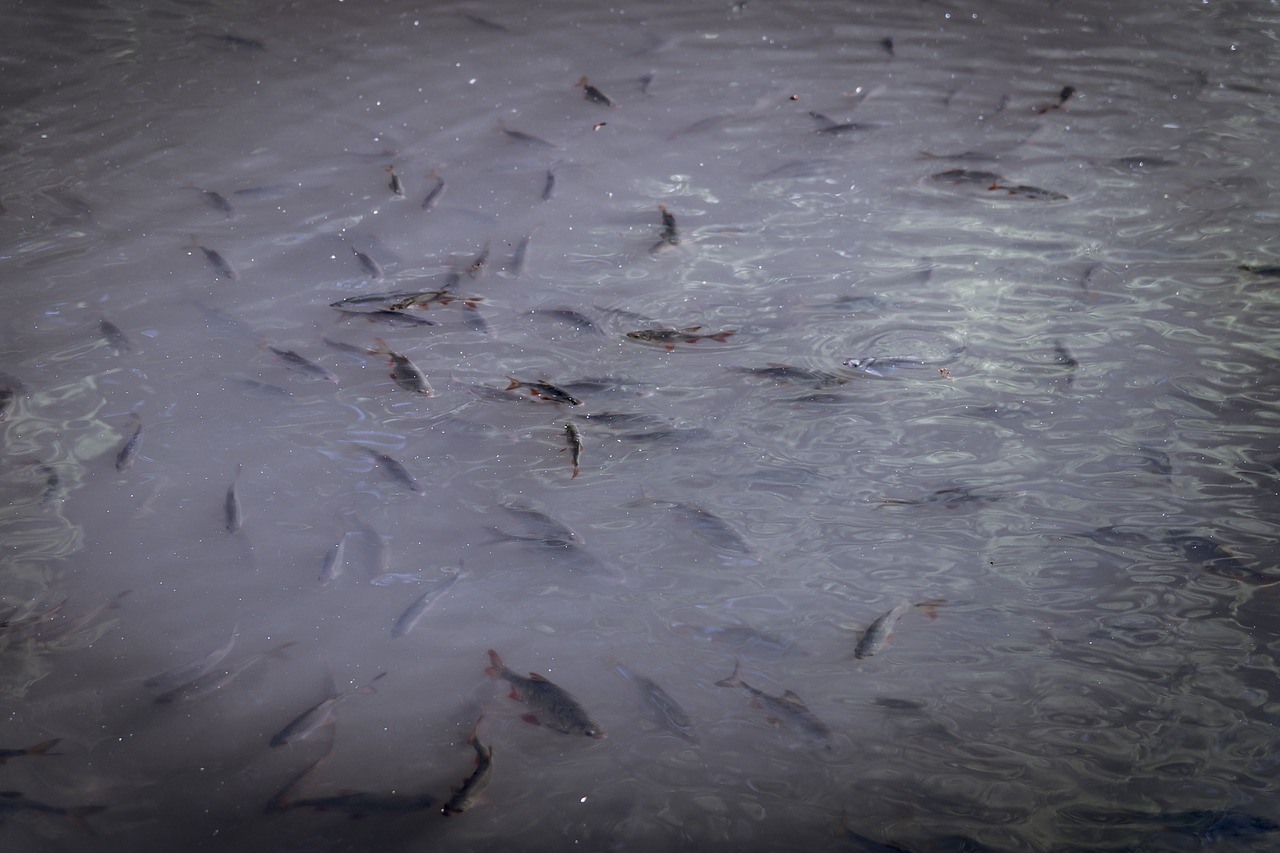
This helps to explain why fish like skimmers and roach are more actively roving around and seeking out food in winter. Compare that to some of the larger fish like carp that tend to be more solitary or hang out in small pods...
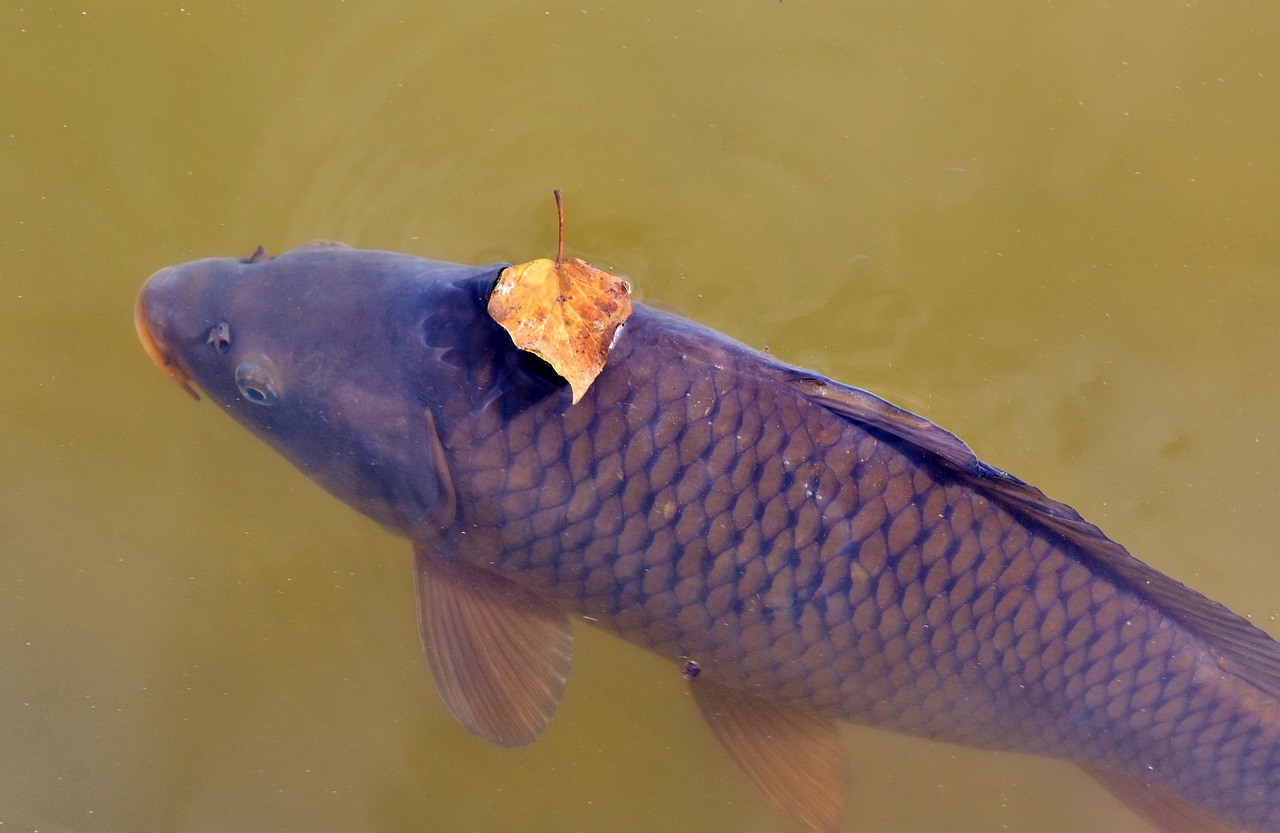
The bigger the individuals of different “silver” species get, the more their body-colours tend to specialise into whatever their tactics for adult survival are (sometimes becoming much darker). But in those early to middle stages of growth, finding food that isn’t being dominated by larger fish and avoiding getting eaten are major priorities.
When bigger fish, like large carp, lock onto a food source – they often seem to bully the silvers out of the way. When you’re fishing for silvers, have you ever found that your swim just dies for 10 to 15 minutes around the time you catch a carp?
By the way, it’s possible that the red fins on some of these species could be involved in communication between different shoal members. However, there’s still a lot to be discovered about shoaling behaviour and fish communication (as you can see from the "Lens of Time" video above).
More handy info from basic fish biology includes:
In colder water fish cannot metabolise as much food (so you can easily overfeed your swim). They will also be less willing to rove around and to move up and down in the water column.
That generally means fishing deeper will be best when it’s cold.
The opposite is true in summer – fish with higher metabolic rates/warm water will be far more eager to move up in the water and feed at/near the surface and through all layers of the water column.
That increased metabolism in summer means you'll also need a lot more feed to hold the fish’s interest in your swim.
Using all these facts will help to guide your rig and tactics choices without you needing to learn each combination of conditions and tactics “parrot-fashion”. That’s why we value principles over lists of unconnected facts here on Fishing Discoveries.
Silver Fishing Baits
As you’d expect for fish in the smaller to medium size-range, baits tend to be on the smaller side. At the same time, it’s probably fair to say that the sizes of particle-baits go up a bit in the summer compared to the winter. There’s exceptions to every rule of course…
Here are some great standby baits that you’ll see used in Silvers matches most weekends:
Maggots
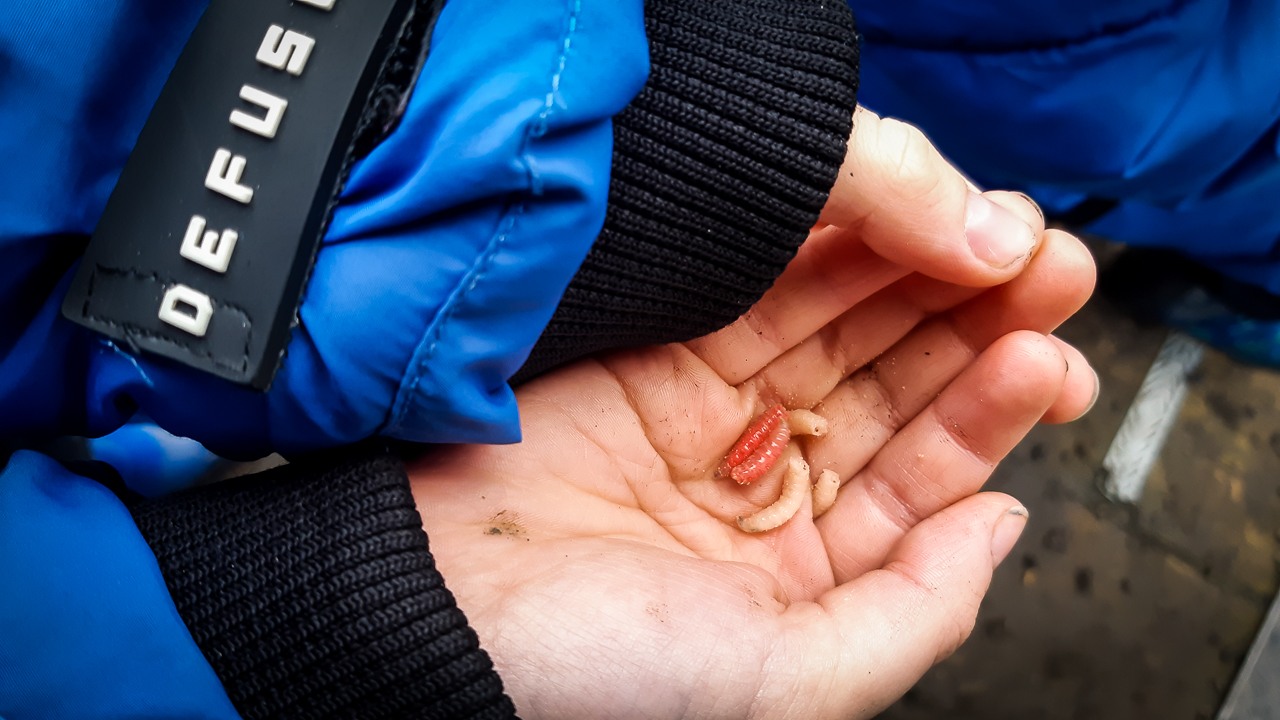
One of the worlds greatest all-round baits and one that isn’t going to go out of fashion any time soon. These are the larvae of larger blowfly species (bluebottles). Match anglers often allow their maggots to feed on specially flavoured attractants overnight before a competition. We’ll get into that in future content…
Under different conditions and for different species, it’s worth having a choice of colours between natural, red, orange and yellow-dyed.
Don’t neglect the dead-maggot option too…
Pinkies
These slightly smaller maggots are the larvae of greenbottle flies and can be a great tactical option for tricky-to-hook fish (and also some of Shaun’s special feeder tactics – but look out for more on that in other content!).
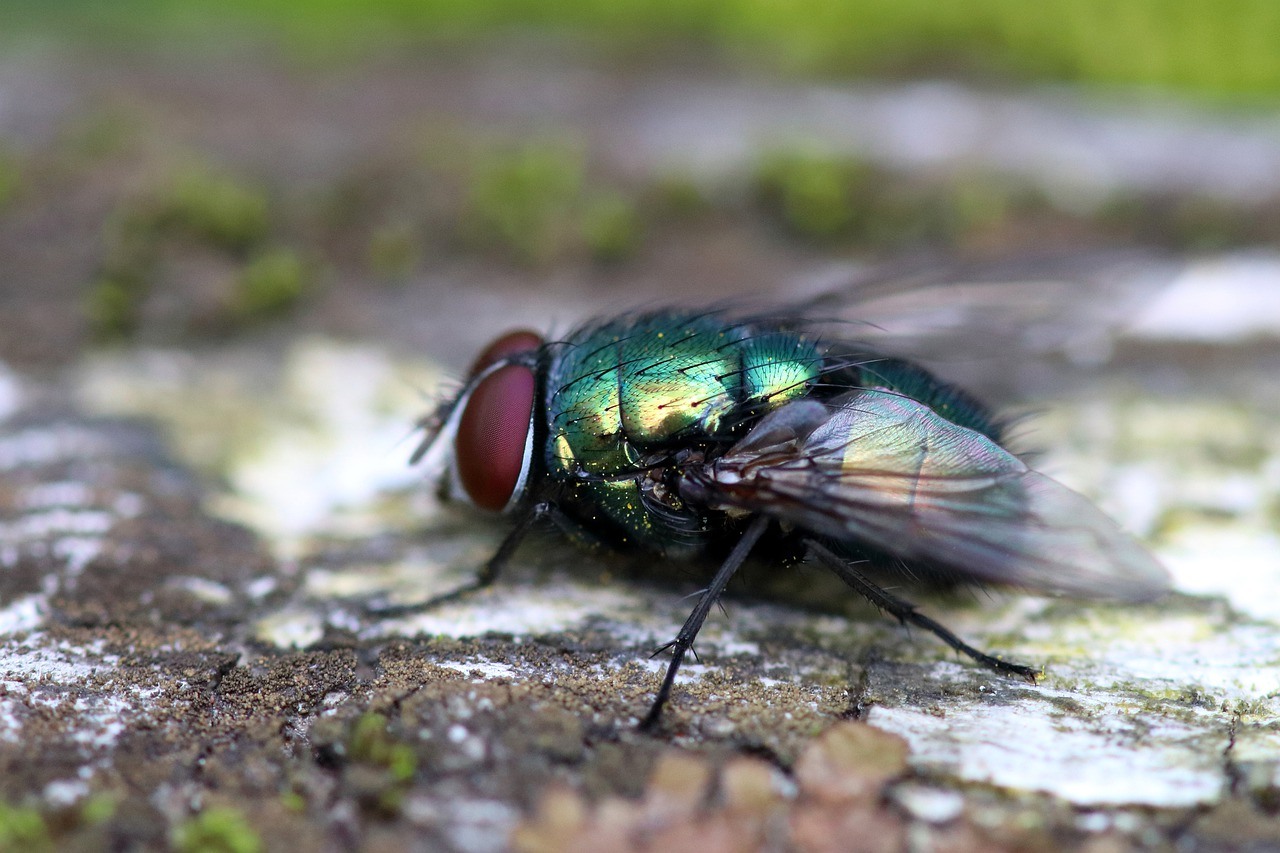
Expander Pellets
Good sizes are 4mm and 6mm for hookbaits – and you can just as easily use both those sizes for loose feed also.
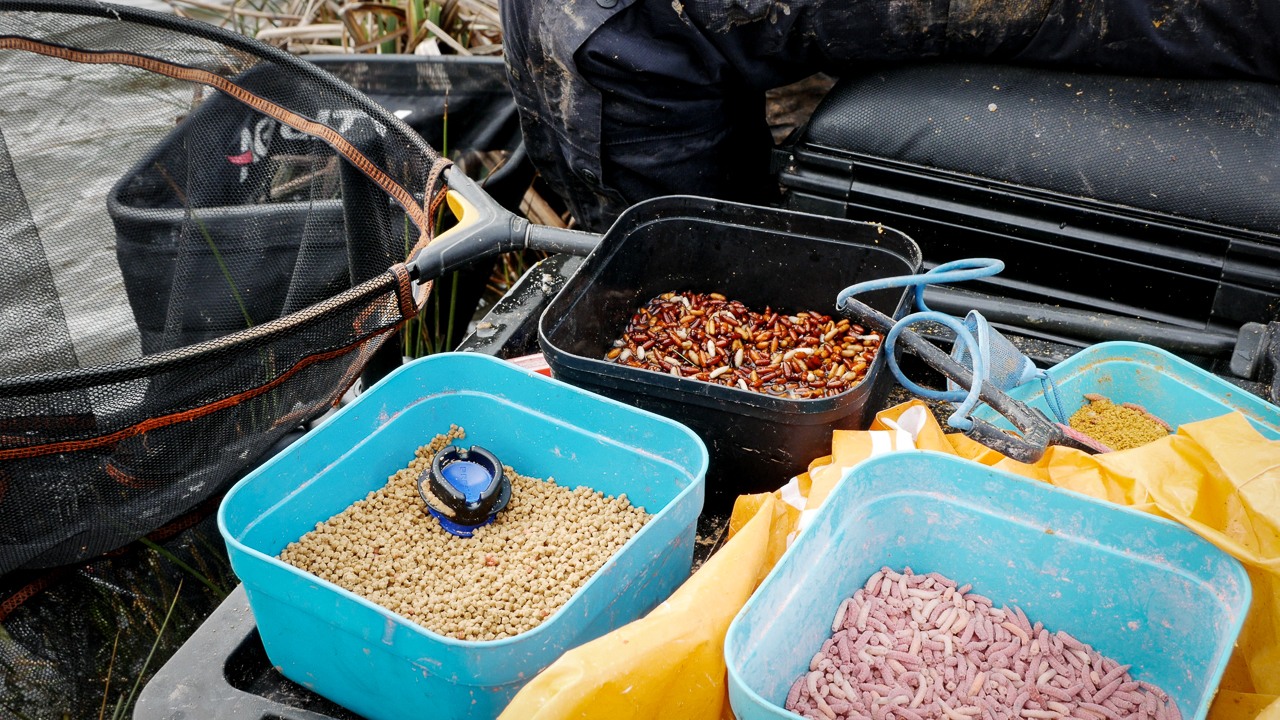
Expander pellets plus "method" feeder mould (left of frame)
Casters
Casters (the chrysalids of maggots before they turn into flies) can be a good “change bait” when you’re trying different tactics or rigs at different ranges. Where you have crucian carp and roach feeding at short range – these can be a really successful hook bait (and they are easy to catapult accurately at short range too).
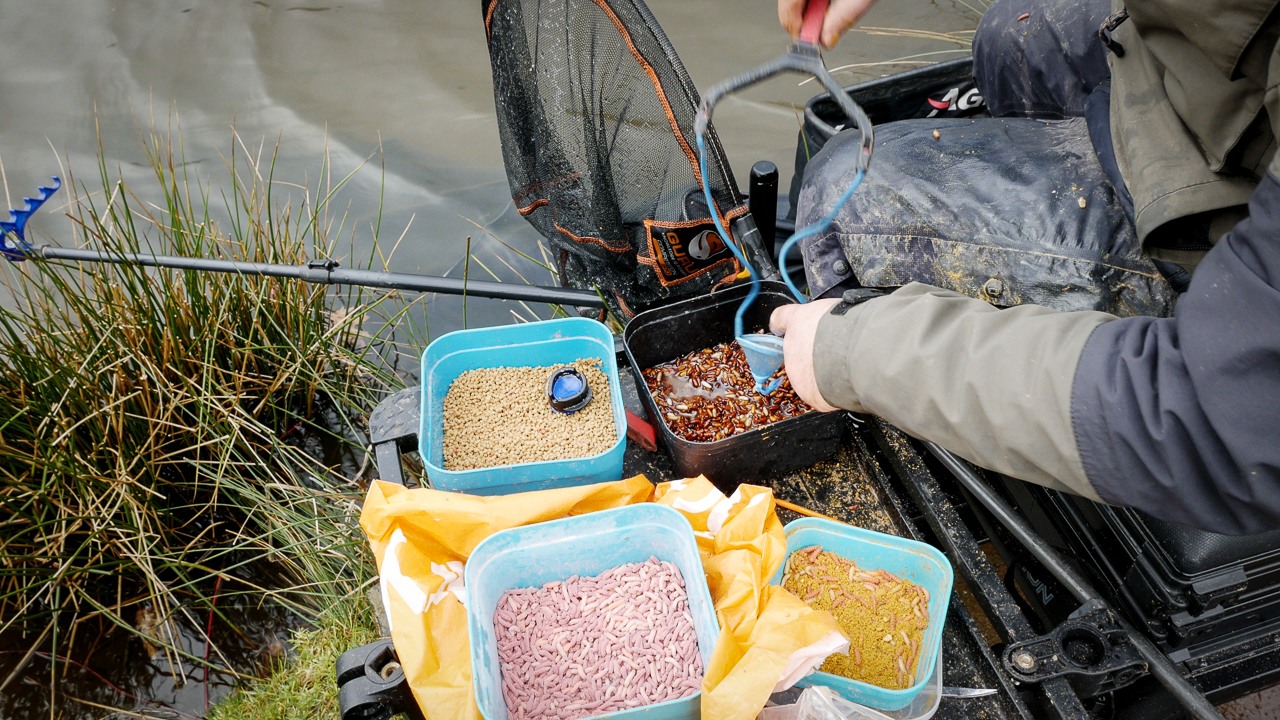
Casters (top right) being added to catapult for feeding Ian's short pole line
Chopped worm
As well as making a smaller mouthful (particularly useful in winter fishing, where fish metabolism is slower and appetites easier to overwhelm), feeding with chopped worm puts great attractive scent into the water.
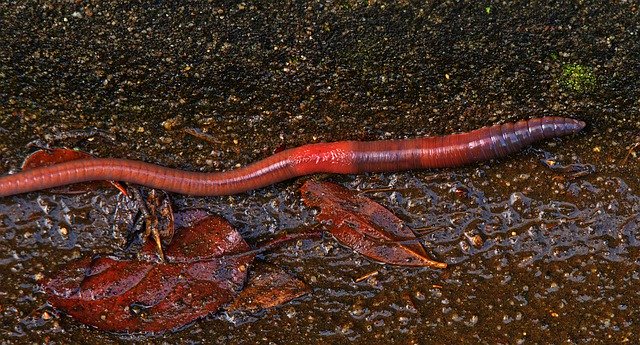
Snip snip....
Scent, however you achieve it, can be essential to draw roving shoals of silverfish into your spot.
Shaun Gaskell’s Three Essential Methods for Silver Fishing
While these are far from the only ways you can catch silvers, they cover a lot of bases to help you cope with a range of conditions. You’ll also find a lot of people who agree with Shaun’s favourite choices!
If you find any of the terms unfamiliar or confusing – watch this space as we’ll be opening up an academy full of content to take you from zero to hero (or from hero to legend!).
Quiver Tip and Small “Method” Feeder
Essential winter tactic that scores for fish feeding on the bottom. It can also be a more comfortable/safer way of beating the wind and fishing at range compared to trying to hold a long pole steady in a gale! That last option is also a good way to break several thousand pounds’ worth of carbon if you’re not careful.
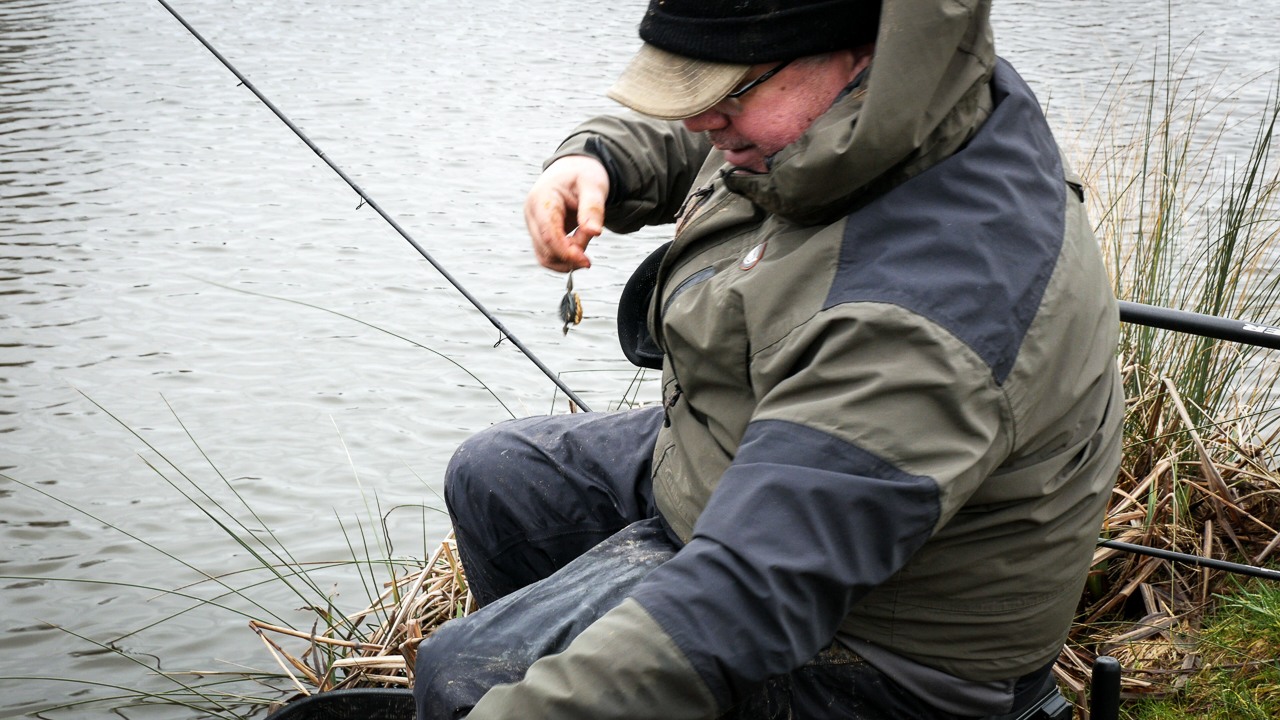
Ian Gaskell about to pick up his rod and launch a loaded method feeder (centre of frame)
A safe bet for groundbait in winter for this method will be a mix with “F1” in the name and good hookbaits include single maggot (perhaps single or double dead red maggot) as well as double pinkies.
Pole (either fished as a margin line or out up to 13m)
In winter, bulk shot closer to the hook link will get the bait through the unproductive upper layers of water quickly. In summer, shotting patterns that are more subtle and spread-out will allow a smooth fall of the bait to fish effectively on the drop. Quick tip, the temperature of the fish will accurately reflect the temperature of the depth-band of water it has come from.
If you can only get bites hard on the lake-bed (and the fish are like blocks of ice when you handle them), you know that you must be extremely wary of overfeeding your swim. For instance, just two and three loose maggots at a time.

Shaun Gaskell scoring heavily with his pole line on the way to a section win despite a really bad draw for this "rover" match
Waggler

Ian taking a succession of smaller fish on the waggler across a variable strong wind
Spray loose feed via catapult and then quickly follow up with a cast beyond the feeding range – then reel back with the rod tip below the surface. That way, your line will sink below the worst of the influences of any surface chop/cross wind.
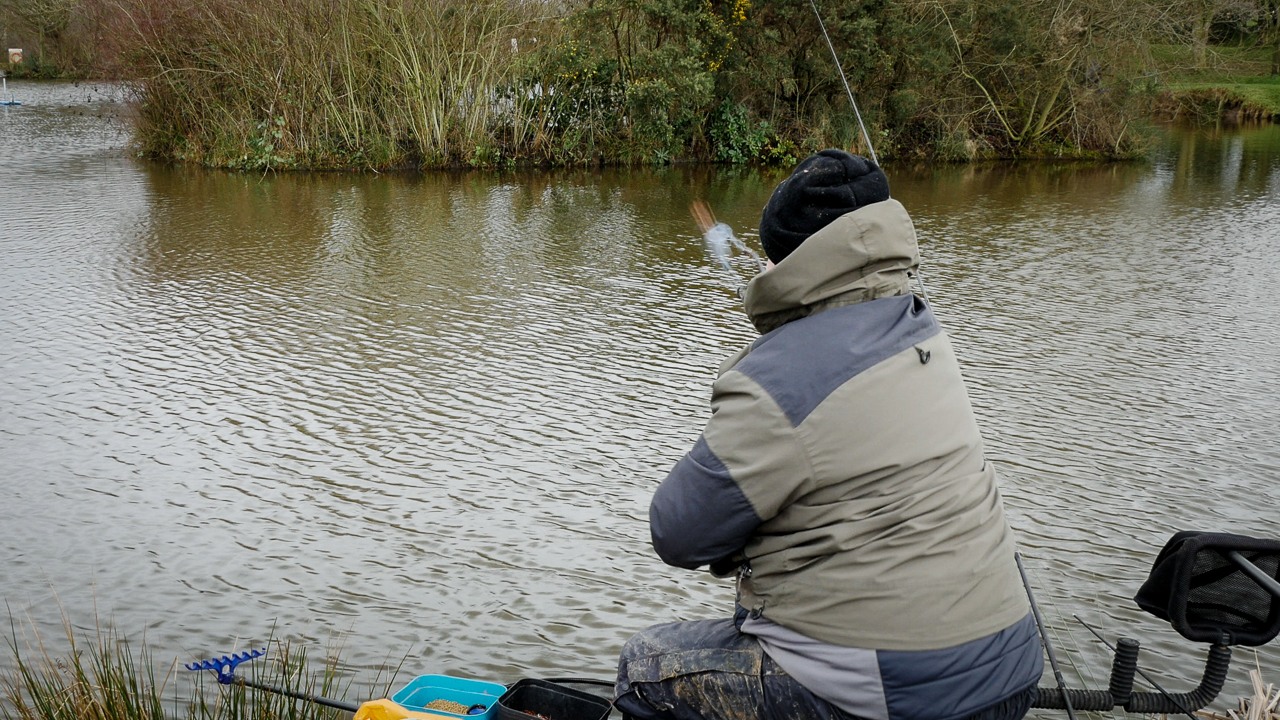
Incoming! A small pinch of maggots firing out of Ian's catapult (the motion-blur makes it look like more maggots than there actually are)
You will have to modify the amount of loose feed according to the conditions and metabolism of the fish. The broad rule will be that the warmer it is – the more you’ll need to feed.
Tackle for Silver Fishing
Hooks
Starting with the fundamental connection between angler and fish – hooks. These will be in the size 22s and 20s for small baits and up to 16s for larger particles. Wires can be a bit wider gauge for the method feeder compared to float-fished tactics. Although you get better penetration with a finer wire, the stresses of playing fish at longer range with more line between you and the fish (especially with greater weight on the line from the feeder) can risk straightening your hook. Hook-links will be short – in the 4” to 6” range and from 0.10mm to 0.12 mm diameter.
"Method" Feeder
Obviously a light-ish feeder rod with a quiver tip and suitable fixed-spool reel (around a 2500 to 3000 size) are needed for method feeder fishing. Going too heavy (i.e. stiff and powerful) with your feeder rod isn’t the best option for using the small method feeders that are ideal for winter fishing.
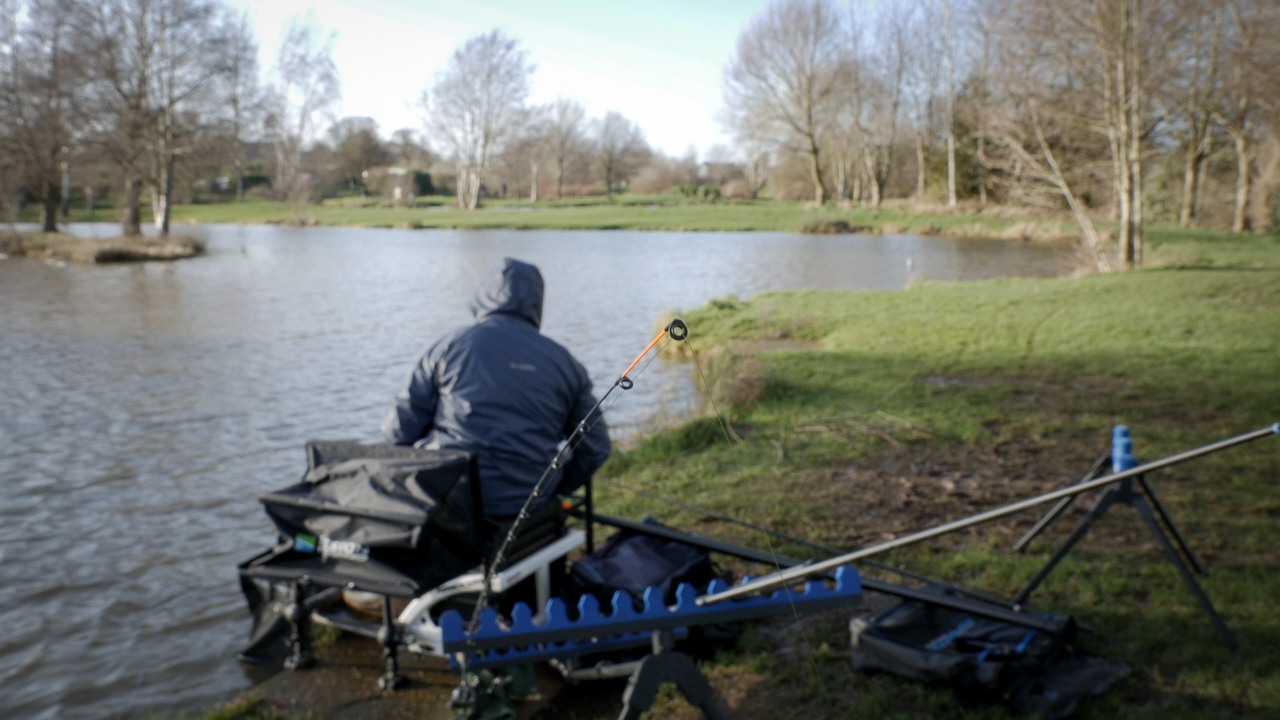
A relatively light feeder rod is best for silver fishing
Remember: The colder the weather, the easier it is to overfeed and spoil your chances. Smaller feeders matched with a lighter-actioned rod are the way to go for sensitivity and balance.
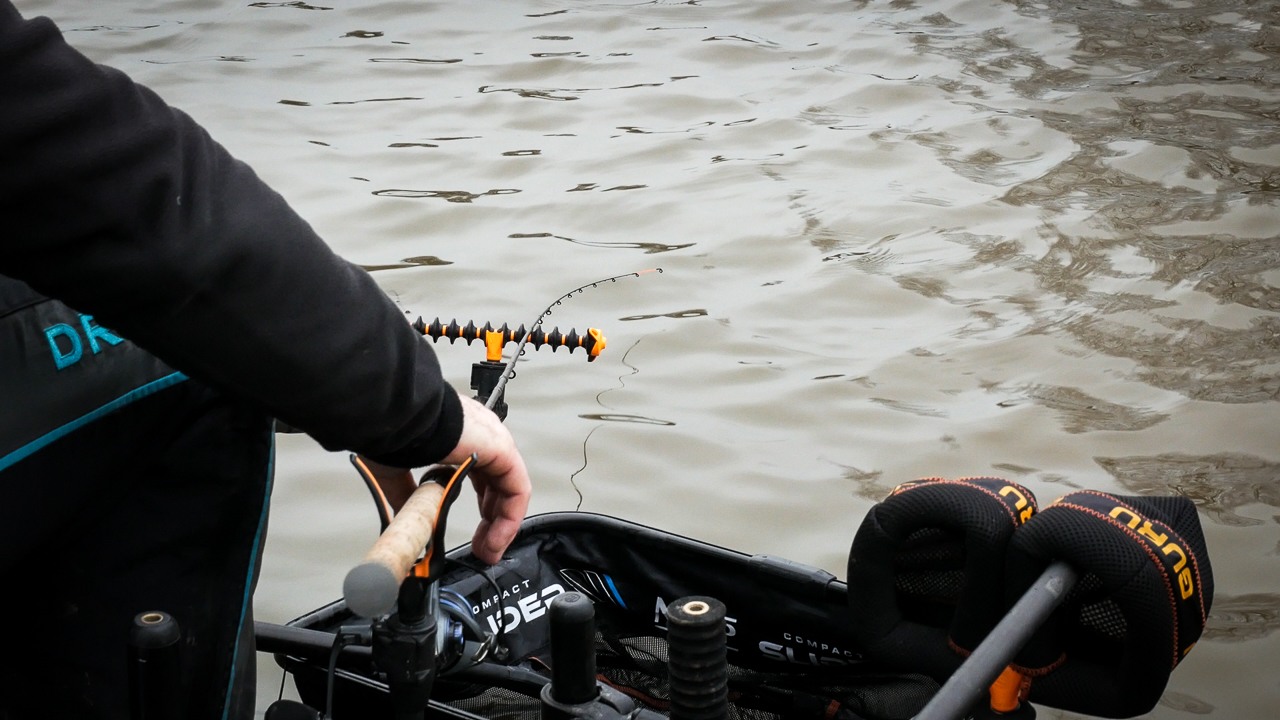
Shaun's hand hovering over his rod - waiting to hit a developing bite on the quiver-tipped method feeder rig
Pole - fished either long or short
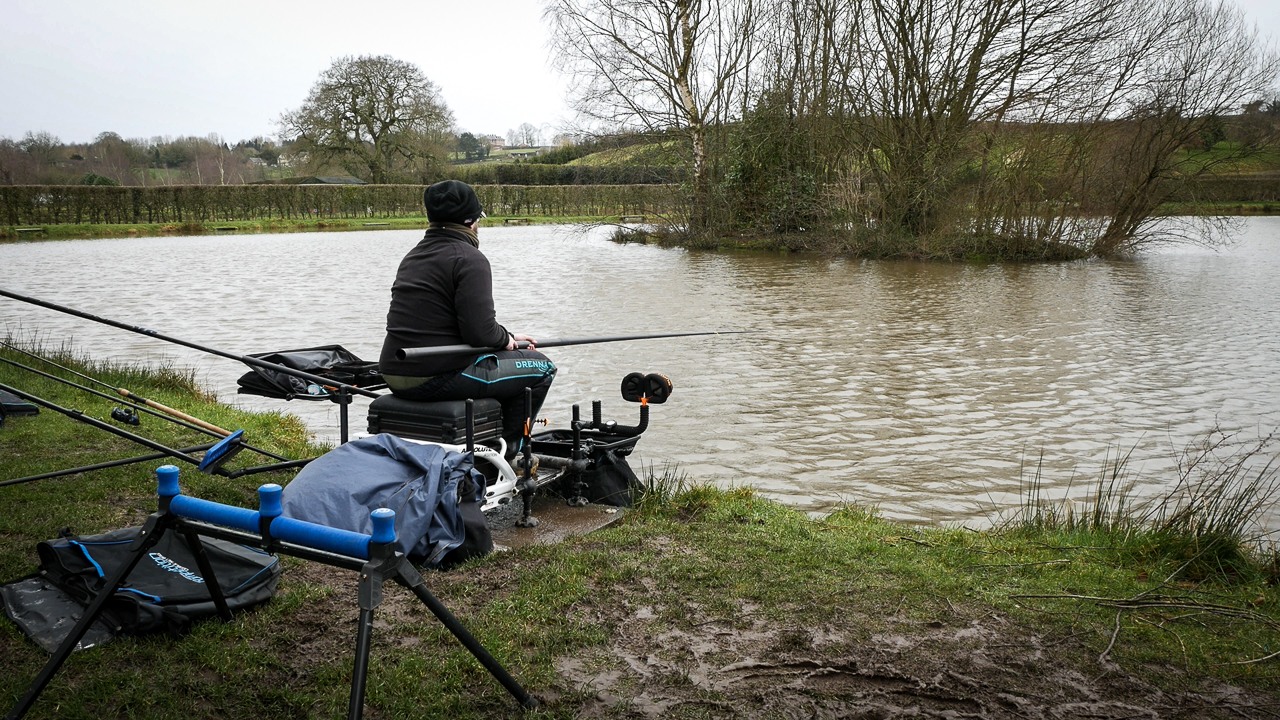
Shaun favours fitting his top two sections with Matrix Slik 4-6 elastic, rigged to a “side pulla” to allow you to use those light elastics/small hooks and still handle bigger fish when they come along (watch Shaun in the Hampton Springs match Video to see the technique).

Another example of one of the major themes of "Cross Training" on Fishing Discoveries: Fly anglers will have an easier time picking up the "side pulla" elastic-stripping technique than people who have only fished either fixed lines or fixed-spool reels before
If you're used to pole elastics having a single rating for stretch, then you won't have come across the development of hollow elastics filled with a liquid that becomes more viscous when squeezed by the walls of a stretching elastic...This allows them to act almost like two separate elastics with different ratings - depending on the size of the fish you hooked (and how hard they are pulling).
The Matrix Slik has properties part way between both standard latex and the hollow/liquid core elastics. We don't make any financial gains from the video below, and it is helpful to explain why Shaun Gaskell chooses that particular option. Here it is explained by another Shaun (Little):
Wire stem floats have an advantage when fishing baits on the bottom as they will help everything settle deep quickly (and be ready to provide indication for bites on the lake-bed more quickly). Lighter stems are good for fishing on the drop in warmer weather – as they’ll stay pointing like an index finger right at your bait as it falls through the water. By following it down like this, you’ll have good bite indication throughout the extended drop phase. Again, lots of cross-training opportunities with bite indication in French Nymphing and Czech Nymphing...
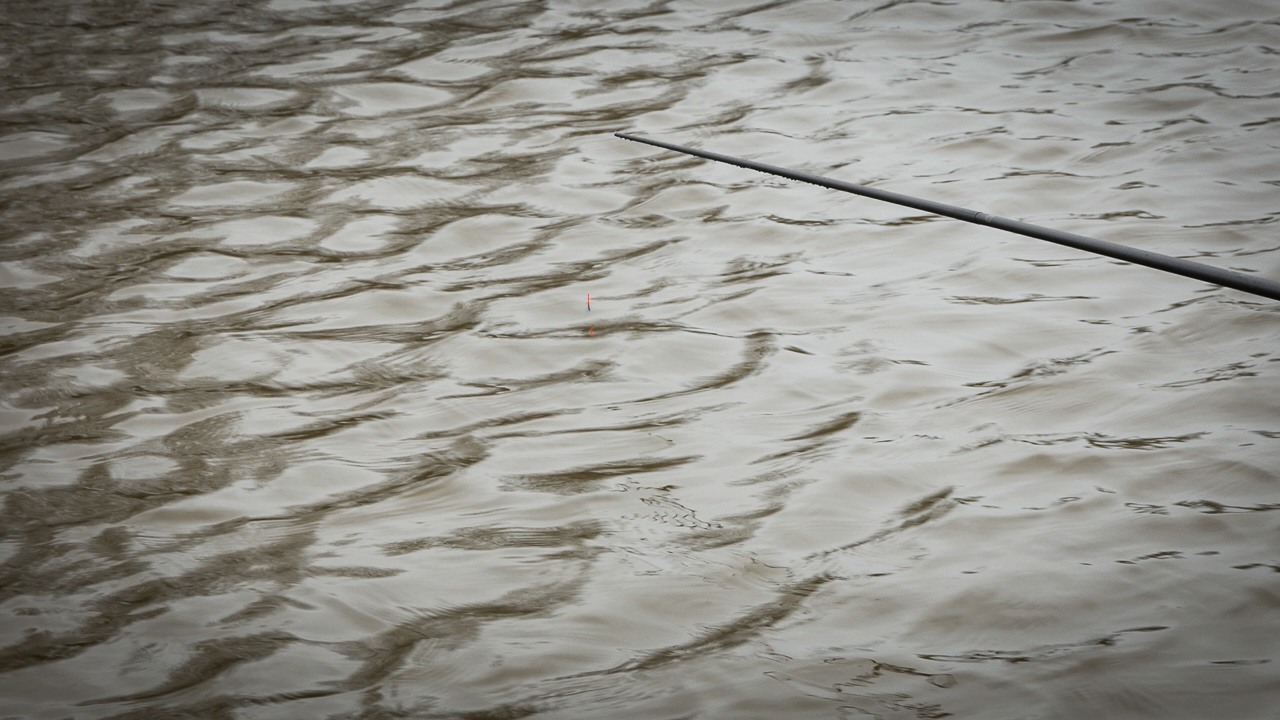
The moment before your float dips under is always pure magic. It's one of those things that - if you've never experienced it - you really don't know what you're missing. Apart from anything else, who knows what you'll actually be attached to when you set that hook?...
Waggler
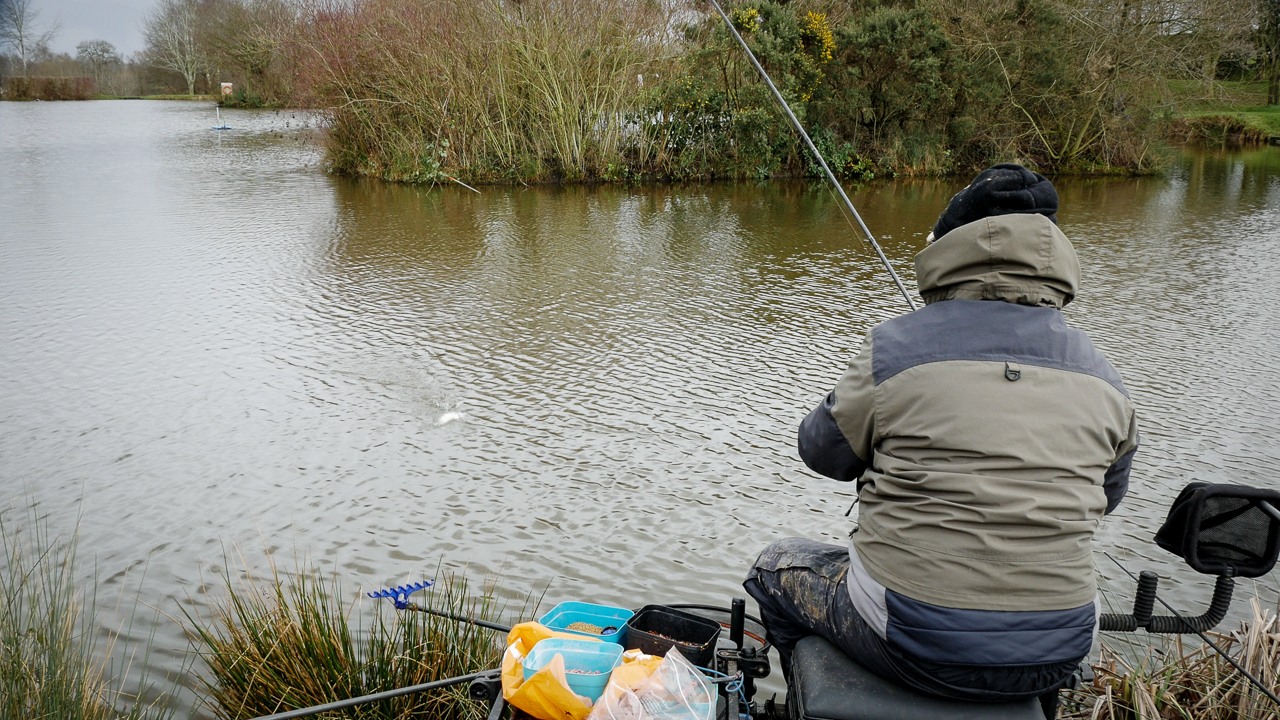
If you look carefully you can spot Ian's crystal waggler float on his line - just where the island meets the water. Waggler floats are attached at the base only - unlike other kinds of float which can be attached at the top and bottom of their stems using float rubbers (small sections of hollow, stretchy tube)
Go for an 11ft or 12ft waggler rod (normally not the stiffer carp models), 2600 size reel with 4lb main line (possibly up to 6lb if you need to pull free of snags). Add a crystal waggler float – rated to carry just enough shot to cast comfortably to your chosen fishing range. With split shot and the hook-links described above, this is pretty much all you need to get you up and running for silver fishing. For pleasure fishing it is also a great all-rounder setup for general coarse fishing on a wide variety of waters.
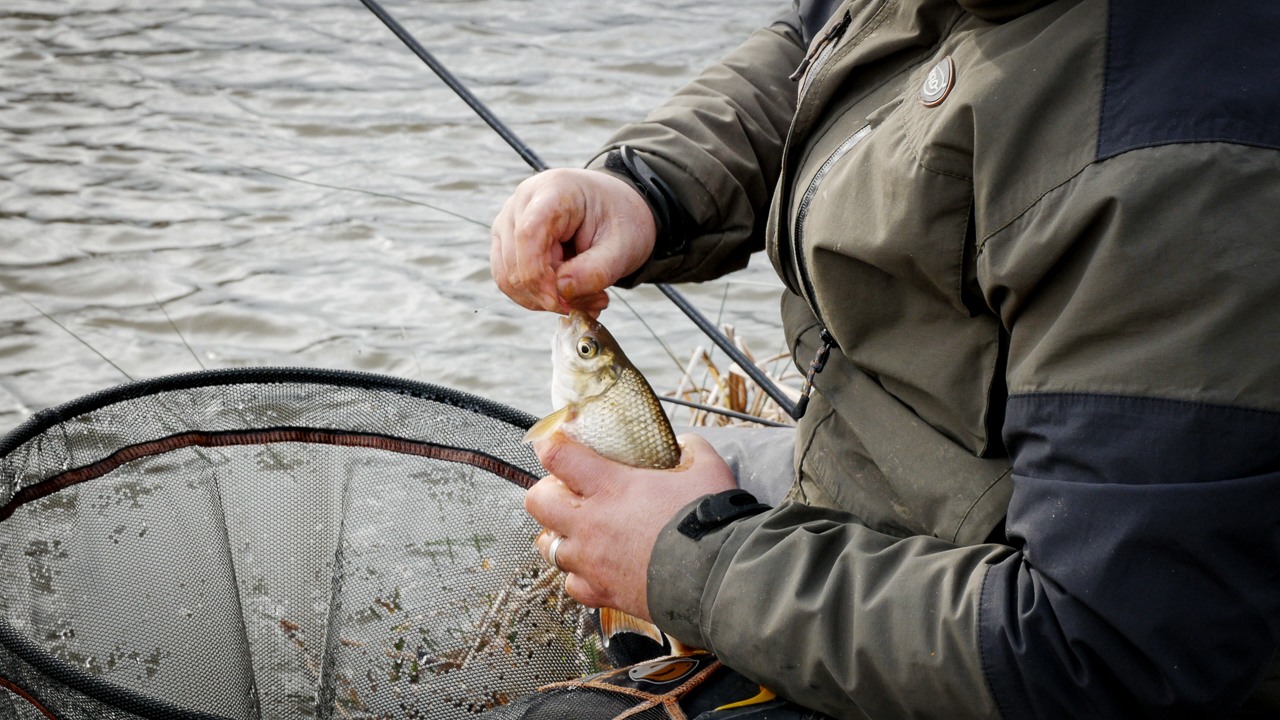
A Rudd/Bream hybrid that fell to Ian's waggler-fished double red maggot
Avoiding Non-Target Species When Silver Fishing
If you’re fishing in a silvers match, the last thing you want to do is catch carp. Not only do they take up lots of valuable time while you are playing them, they also tend to wreck your swim for a while afterwards. Be careful though, until you have laid eyes on the fish that is pulling back hard, don’t deliberately straighten your hook so you can replace it with a pre-tied hooklink to save time. Often enough it will be a 3lb F1! This is something that both Ian and Shaun were keen to stress as we filmed their competition in the video above.
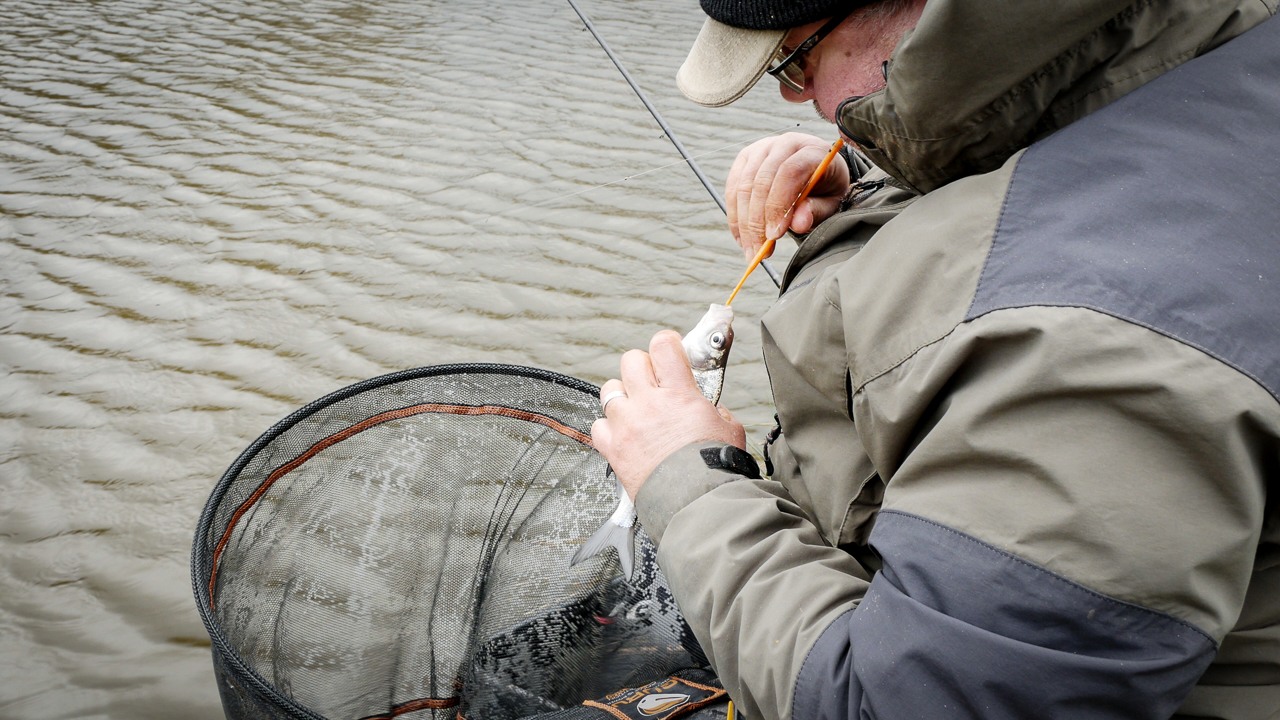
Full points for Ian on the waggler - a legit skimmer bream (you can see why these are considered "silvers")
Your three best weapons for avoiding carp are...
As follows:
None of the above tactics create an absolute guarantee of success (you should be suspicious of anyone who promises that in fishing btw). However, when used together, this approach does allow you to start preparing in a way that gives you the best CHANCE of success.
That is the secret to fishing and (probably) lots of things in life...Take care of what you CAN control, try not to get bent out of shape by what you CAN'T control (like your draw number - or the weather!).
Expert Angler Profiles
Ian Gaskell
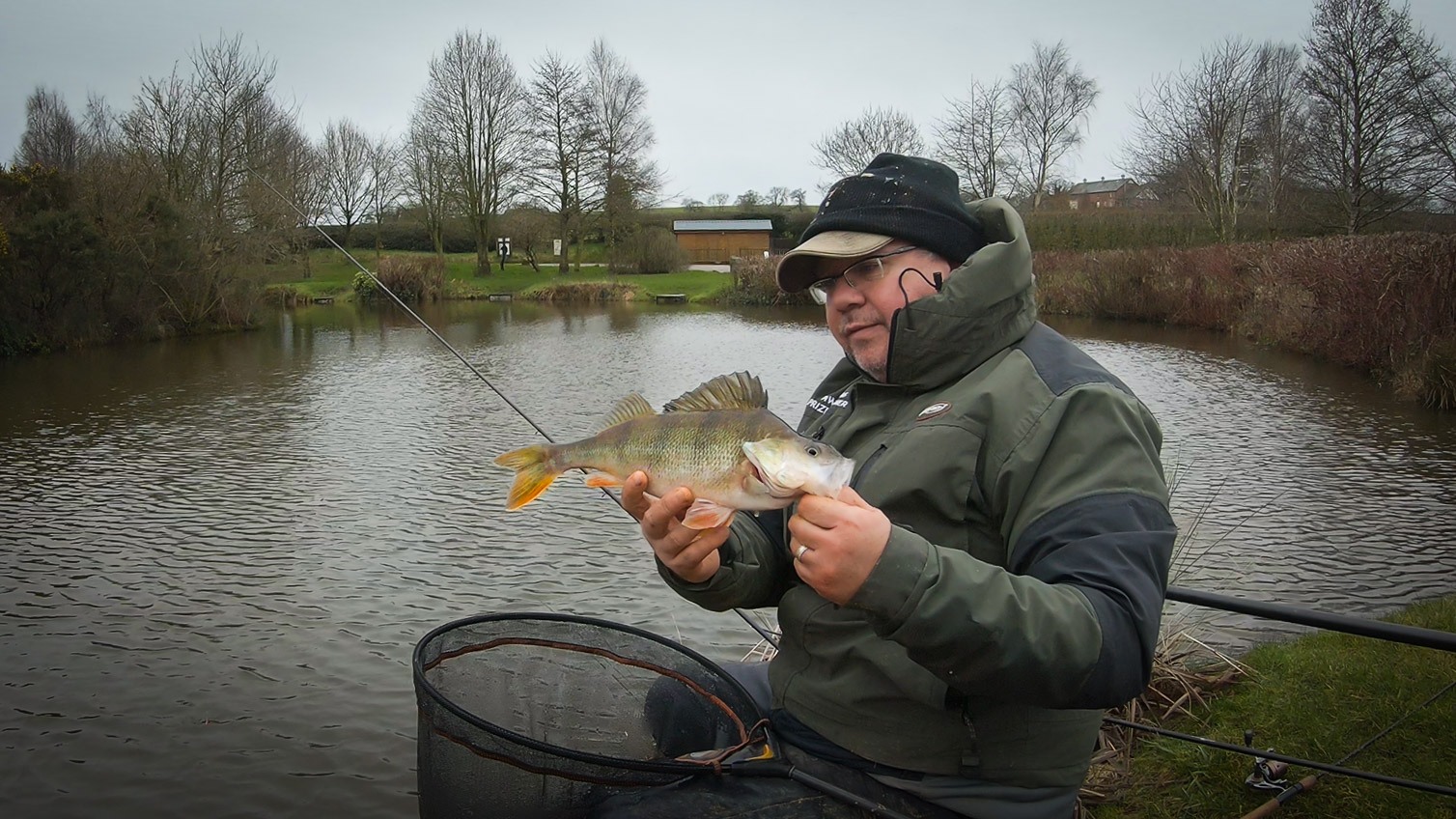
Ian's my brother and he started fishing as a self-taught angler around age 13. He's also my first angling teacher and the reason I got involved in the sport between 6 and 7 years old.
A long-standing member of Stocks Bowlanders "Falcons" fly fishing team (their first team); Ian has also chalked up impressive individual and team competition results including:
Ian has fished all around the world for multiple species - including Char in Icelandic lakes, Striped Bass from Cape Cod, Huge Carp from France as well as wild Irish Trout, Sea-trout and Salmon. He is based in the Northwest of England and holds a dan grade in Judo - winning the national open-weight category as a brown belt.
Shaun Gaskell

Shaun is Ian's son (which makes him my nephew!) and his first fish was a golden orfe caught while fishing from his dad's knee aged 4. He hasn't stopped since...
Shaun first joined Stocks Bowlanders in their "Cormorants" team in 2014, before quickly working his way up and getting the nod in 2015/16 to join the Falcons. Some of his highlights include:
Shaun enjoys the pressure of competition - growing up as a talented rugby player as well as junior national Judo gold medallist for his weight class. He works as a physiotherapist and is also based in the Northwest.
Inspired by Silver Fishing?
If you're a beginner in this area (perhaps an expert in others of course) - OR if you're already hauling ass on these methods...look out for our Coarse Fishing Academy content. It will take care of the fundamentals and remove barriers to anyone who wants to get into bait and coarse fishing. It will also offer special, in-depth and top-level tactics to take you way ahead of the curve.
We're still hard at work creating it at this moment, but watch this space.
Paul Gaskell
PS - Please feel free to comment below on what I got right and wrong in this article; you can either leave comments as a guest, or you can use your Facebook or Google accounts to show your picture and identity to other readers. So have at it...

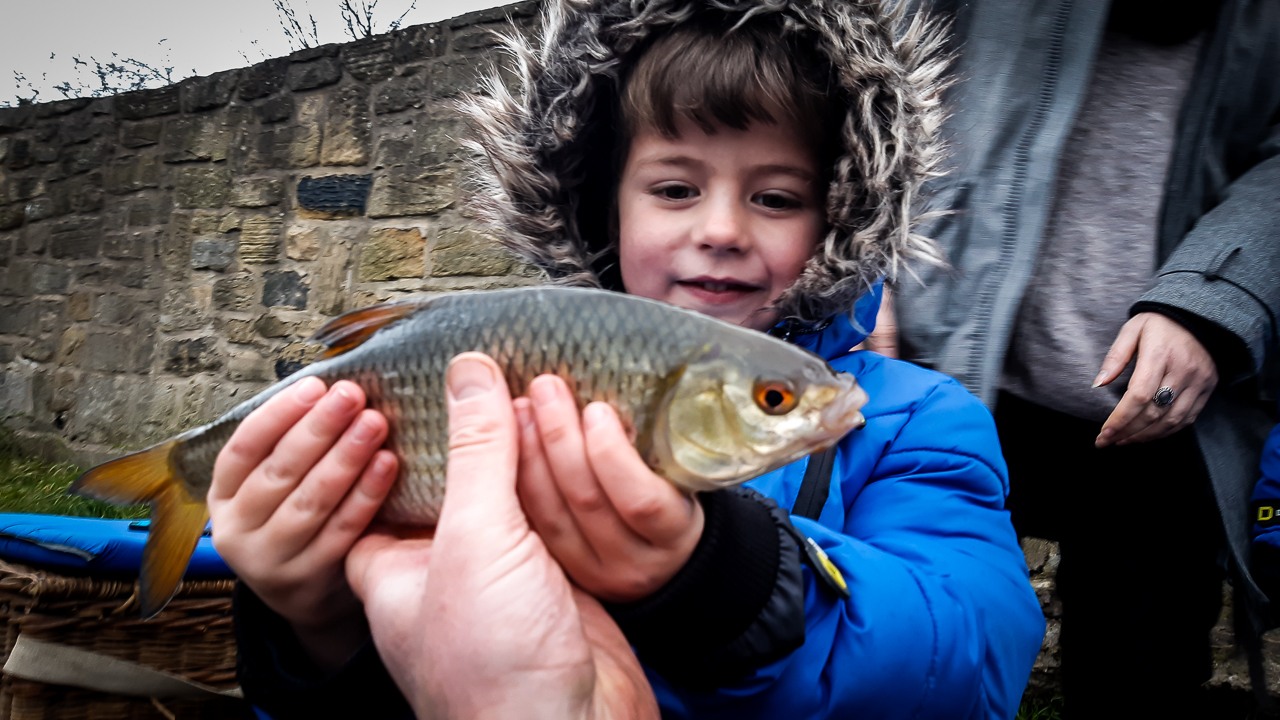
Great read, also love the inherited addiction to what is probably the best pastime ever!!
Thanks Andy – and you’re absolutely right about the best pastime ever; particularly when enjoyed inter-generationally.
Great read and interesting videos.
Thanks Thomas!
Paul